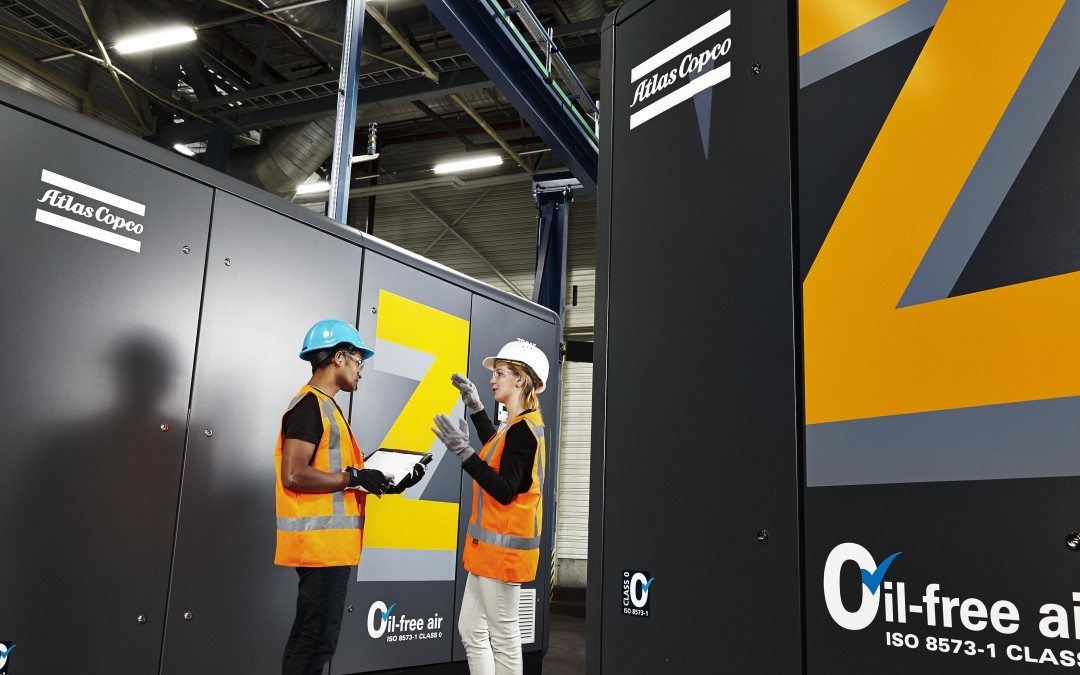The following is an excerpt from the article Food safety and compressed air by Deepak Vetal, product marketing manager at Atlas Copco Compressors. The cover article was recently published in the December issue of Fluid Power World magazine.
Compressed air is a safe, reliable and essential power source for countless manufacturers. However, compressed air quality—gaged by the quantity of particulates, water and oil the air contains—can vary widely, depending on the application. In packaging, food and beverage, and pharmaceutical manufacturing processes, air cleanliness requirements are almost always more stringent than in other industrial settings.
For instance, high-quality compressed air is essential in food production to prevent product contamination and ensure consumer safety, as well as avoid costly headaches like product recalls, litigation and damage to brand reputation.
Surprisingly, there are two schools of thought when it comes to high-quality compressed air, particularly in regard to oil content. Here’s how manufacturers weigh risk versus cost when specifying compressed air systems.
Oil versus oil-free
Food and packaging plants rely on compressed air for wide-ranging tasks, including powering actuators, cleaning equipment, pressurizing vessels, transporting and sorting material and blow-molding containers.
Such operations are often classified as contact and noncontact. Contact applications involve air that directly contacts food or in processes where compressed air is used in food production, processing, packaging and transportation. In contact operations, oil content in compressed air should be less than 0.01 mg/m³.
Noncontact compressed air is the air exhausted into immediate surroundings during food preparation, processing, packaging and storage. Oil content for noncontact operations should be less than or equal to 0.01 mg/m³.
Due to the wide range of applications, at least incidental contact of compressed air with products or equipment is often unavoidable. Thus, manufacturers that select compressed-air systems must carefully consider safety on one hand, and productivity and cost on the other.
Unfortunately, FDA regulations only provide broad recommendations when it comes to compressed air quality. That is, guidelines only say that compressed air introduced into food, or used to clean food-contact surfaces or equipment, must not contaminate food with unhygienic or harmful substances. The FDA does not stipulate specific compressor types for the food and packaging industries, so manufacturers can use both oil-free and oil-injected compressors
Keep Reading…
You can read the full article, which discusses oil-injected and oil-free compressors, as well as the benefits of Class 0 oil-free certification here: Food safety and compressed air. If you would like to learn more about Atlas Copco’s products for food and beverage manufacturing applications, contact us or leave a comment below.
You may also enjoy the following articles:
- 2016 Manufacturing Trends
- Top 5 New Year’s Resolutions for Compressed Air Systems
- 3 Things To Consider When Selecting Compressed Air Systems For Food Manufacturing
Source: Compressed Air Blog


